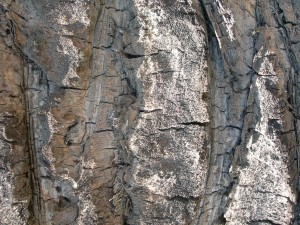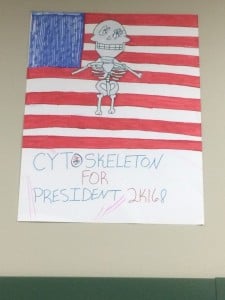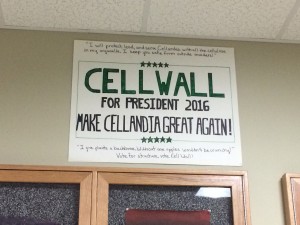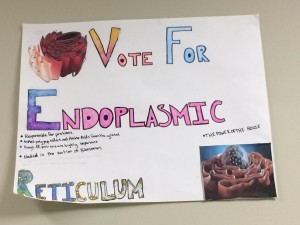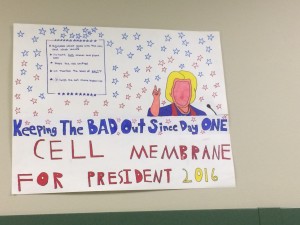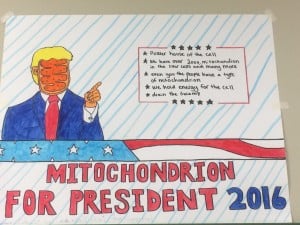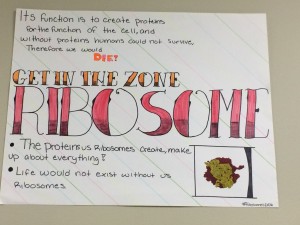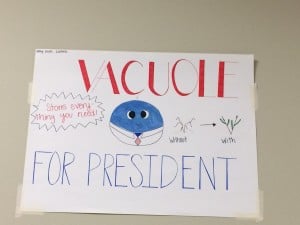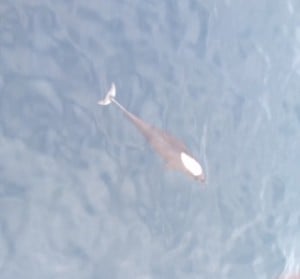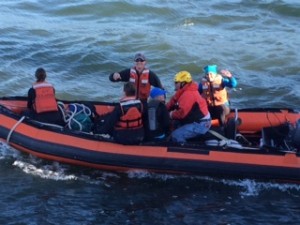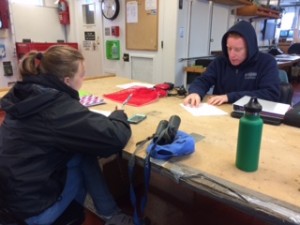I have not yet been able to pin down Dr. Torres for an interview as she has been incredibly busy, but the graduate students have told me about their research goals and history. Again, I have pictures but the wifi on board is not allowing me to transfer them, so I’ll do that when we dock in Portland tomorrow.
Meet Jane Dolliber!
Jane grew up in Seattle, Washington. She has been interested in birds for as long as she can remember; her interest in science dates back to high school. She wanted to be a Biochemist until she realized that being a Biochemist meant being in a lab ALL the time, so she switched to a field that would get her outside. Jane did her undergraduate schooling in the Biology Department at the University of Washington; then she converted to Beaverism and now is a Master’s student at Oregon State University. Her specialty is pelagic birds, and her thesis research is on using satellite imagery to count nesting, Short-tailed albatross on colony (as opposed to on the water). Short-tailed albatross are a North Pacific species – they live from the east to the west Pacific down to the Oregon coast. Jane says that the juveniles tend to wander farther than the adults; kind of like sending your kid to the store and they wander around to several stores before the parents tell them, “No, just go to the hardware store.” When she finishes her Master’s, Jane would like a job that blends teaching and research; she will likely go back to school to earn a PhD. On this cruise she is doing counts of any seabirds found to augment information on how these birds will be affected by development of alternative energy.
Meet Florence Sullivan!
Florence is a graduate student in the Department of Fisheries and Wildlife at Oregon State University. Originally she hails from Seattle, like Jane and myself. She earned her Bachelor’s degree from University of Washington in the Oceanography department. Florence’s research is on the foraging ecology of gray whales on the coast – the specific group she studies is the Pacific Coast Feeding Group – about 200 individuals that, instead of migrating up to the Bering Sea, stays between Northern California and southeast Alaska. Usually gray whales range from Baja to northern Alaska. They are hoping to do long-term ecological research. Gray whales are very plastic on what they eat, so part of her research is looking at what they eat. She has also been investigating the impact of whale-watching tour boats on gray whales. As this industry grows, she and Dr. Torres just want to help the average boater understand how to keep the whales safe. They are very close to having a brochure to distribute up and down the coast. On this cruise, Florence is in charge of oceanography, running the CTD casts to profile the water column to get snapshot images of the ocean conditions that the whales are traveling through. In particular, they are looking at the temperature and primary production (plankton). Regions that are very productive because of upwelling have high productivity and this magnifies up the food chain. In essence, what is good for the prey is good for the predators. Florence and Amanda have been writing blog posts and they wrote a great post about humpback whales. Here’s the link: www.blogs.oregonstate.edu/gemmlab.
Meet Amanda Holdman!
Amanda is currently working on her Master’s degree with Dr. Torres at Oregon State University. She is a transplant from Bloomington, Indiana, having earned her bachelor’s degree from Purdue University in northern Indiana. Amanda is nearly finished with her thesis. She has been researching the habitat ecology of harbor porpoises, along with a bit of behavioral ecology; she accomplishes this through both visual and acoustic data. In other words, she watches them and listens to the sounds they make. To do this, she has used hydrophones that are designed for high-frequency sounds, such as those made by porpoises, dolphins, and killer whales. On this cruise, Amanda is collecting data on all marine mammals we’ve spotted, but she will only analyze the data on harbor porpoises. Amanda also has done research in terrestrial habitats – she has worked with black bears in Michigan, white-tailed deer, coyote pups, and fox in Indiana. She has a passion for protecting animals from anthropogenic impacts, so information about their habitats is essential. When she finishes, Amanda would like to continue researching conservation ecology of mammals, and after a couple years, she will likely pursue a PhD.
Link to OSU blog
